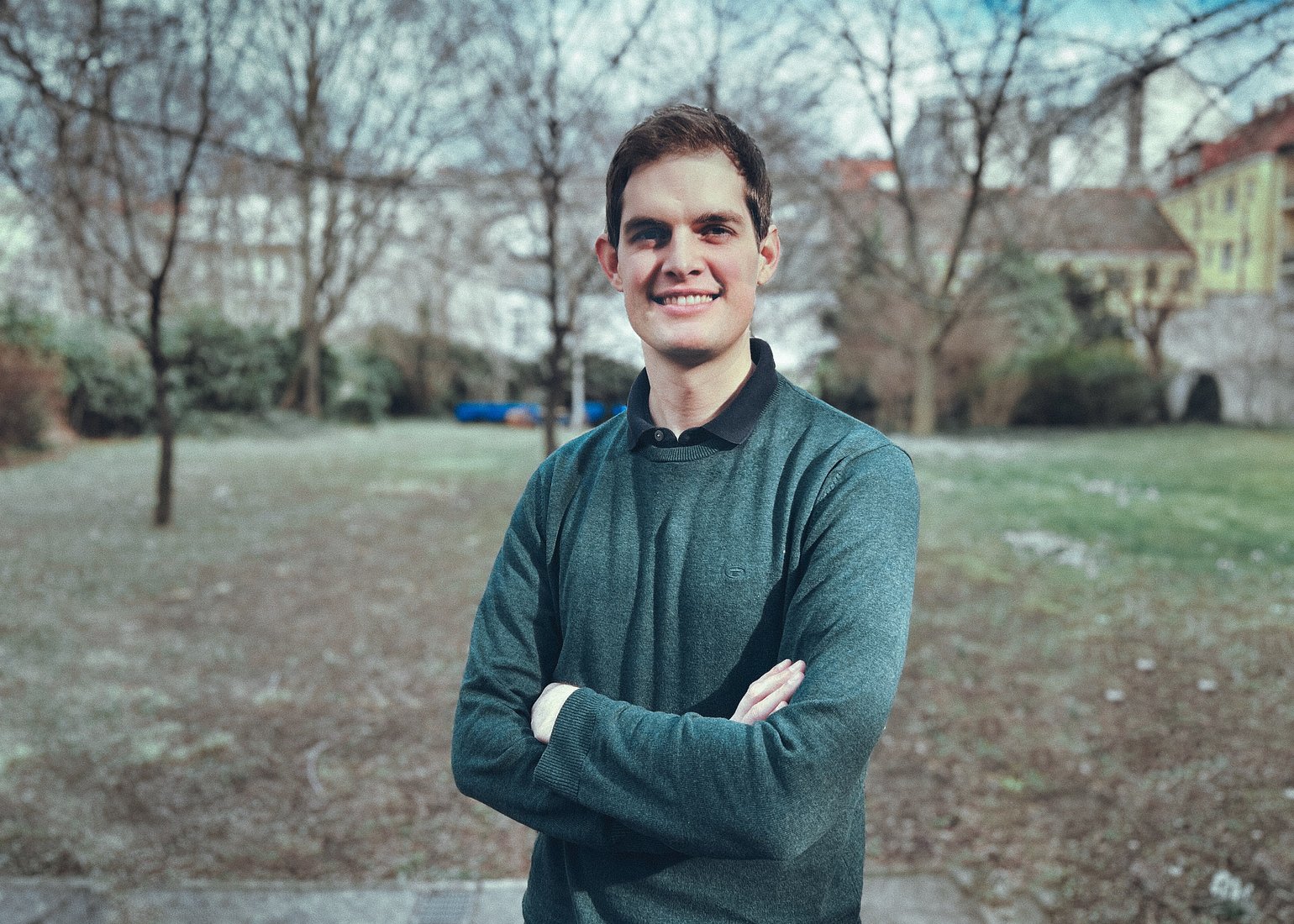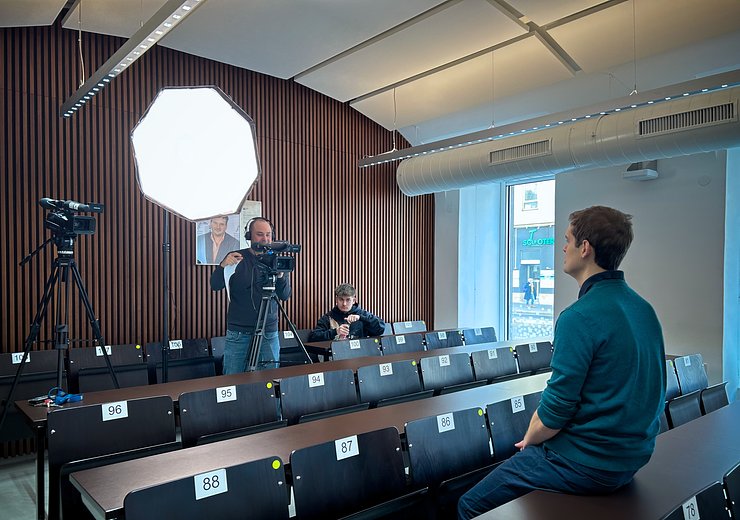#AlumniStories: Markus Zlabinger
Markus co-founded the start-up imagetwin. He tells us about his journey from informatics student to business owner.

About
Markus Zlabinger, co-founder of imagetwin, focuses on AI-based fraud detection. He holds a Ph.D. and Master’s degree in Software Engineering from TU Wien Informatics. In 2022, he co-founded his start-up, which uses AI to detect errors and manipulations in images from scientific publications. Markus’s experience spans from several roles in R&D (i.e. at T-Mobile Austria), to academic research positions.
You’re the co-founder of the start-up imagetwin – what is your company about?
Image plagiarism, fabrication, and manipulation are a severe threat to scientific integrity, especially in life sciences, where 20% of scientific publications have some sort of problem with their imagery. Take a picture of a cell cluster, for example. Crop parts out here, add something there – an image like this can easily be altered with any standard editing program to support an intended narrative. At imagetwin, we help academic institutions and publishers to detect errors in scientific publications. Our software is based on artificial intelligence that detects problems by comparing images with a database containing millions of articles. Of course, fraud is a worst-case scenario. We also deal with less malicious intent, for example, accidental mistakes like image duplicates. We currently have a staff of seven people with different expertise. There is no standard workday in a start-up – we’re doing everything, sometimes all at once – research, meetings, financials, web interface, customer service … Luckily, it’s precisely this diverse working environment that excites me.
How does your software work?
The normal procedure is that we receive unpublished manuscripts via our web interface. This interface shows publishers all sorts of problems that we detected; for example, be careful, this image already appeared in another publication ten years ago, or this image has been manipulated. Of course, it remains the publisher’s decision on how to proceed. We can give clues, but we don’t decide if a certain image is appropriate or not. This essentially lies in the expertise of the reviewers. Our main goal is to uncover flaws – from accidental mistakes to deliberate deceptions – and to provide grounds for improvements in the scientific work process.
We closely work with experts from the field to make our software more efficient and precise, but also if we gather feedback on new features. This exchange gives us the opportunity to become even better in what we do and thus also to improve scientific reviews along the way.
Why a start-up? How did you get there and what are the benefits and challenges?
In the beginning, I had no clue whatsoever about business plans or market value (laughs). It all started with my master’s thesis: My supervisor Allan Hanbury suggested looking into plagiarism and fabrication detection in images, which I promptly decided to do. The results were promising, but for my Ph.D., I wanted to explore some more and went in a different direction. It all changed quite unexpectedly: I’ve been following the public discourse on plagiarism research and image detection on X (Twitter) for a while and decided to send my master’s thesis results to Elisabeth Bik. She is a pioneer in detecting image manipulations, with over 130k Followers. Bik replied, “If your software really detected these flaws, it is a goldmine.”
I then took part in a one-week intense program at TU Wien’s I2C Innovation Incubation Center where they teach you business essentials. On the last day, they organized a pitch contest – the winner was to be part of the incubation center for a year with resources & mentoring. Well, we won that and that’s how the journey started. I founded imagetwin in 2022 together with my friend and colleague Patrick Starke. Dual leadership works excellently for us, with him coming from an economics background, combined with my technical know-how.
It’s great to see that our product makes sense and supports publishers and scientists. For example, when we can win new customers, or help to increase the quality of a scientific publication. Work-life balance is a challenge for me. Nevertheless, it’s nice to have the opportunity to learn so many new things and keep getting better.
As an alumnus, how do you look back on your studies at TU Wien Informatics?
Alone, you can’t do anything. The learning environment at TU Wien Informatics boosted me immensely. From the start, I had colleagues to study with and solve problems together and professors like Allan Hanbury who greatly supported me. Later in my Ph.D., it was even more intense – getting together with other researchers and discussing new solutions was such a benefit for my work. I was happy to have such a great network of people who supported each other. Of course, I also struggled sometimes. Difficult lectures, lots of learning to do, and sometimes the thought, “Will I really need this later in my career?” crept in. My network helped me to power through the hard times.
What is your tip for beginners in informatics?
A systematic approach is the most important thing to work your way ahead. Find people with whom you work well together right from the start – you’re in the same boat for a few years and there is so much opportunity to grow together. At the beginning, I didn’t know any one of my peers. But from my experience, simple questions like “Phew, did you understand that?” after a lecture can lead to years of strong friendship!
Watch the video!
About imagetwin
If irregularities in the reproduction of images in a research paper come to light, this has serious consequences in the scientific community: from costly investigation processes, the revocation of academic titles, and jeopardized research careers to lasting damage to universities’ and publishers’ image. It is not always fraud or malicious intent, but five out of 100 scientific papers have problematic image duplicates that are not found during the manual quality check, the so-called peer review.
Markus Zlabinger and Patrick Starke, founders of the start-up imagetwin, have developed an AI-based solution to detect image duplicates in scientific publications. The software is based on supervised machine learning, i.e. trained artificial intelligence that can detect image duplicates between different publications. In addition, imagetwin recognizes manipulations within individual images. Problematic image areas are automatically identified and flagged. The development is intended not only to help uncover deliberate deceptions but also to provide indications of potential improvements in the scientific work process.
Curious about our other news? Subscribe to our news feed, calendar, or newsletter, or follow us on social media.



